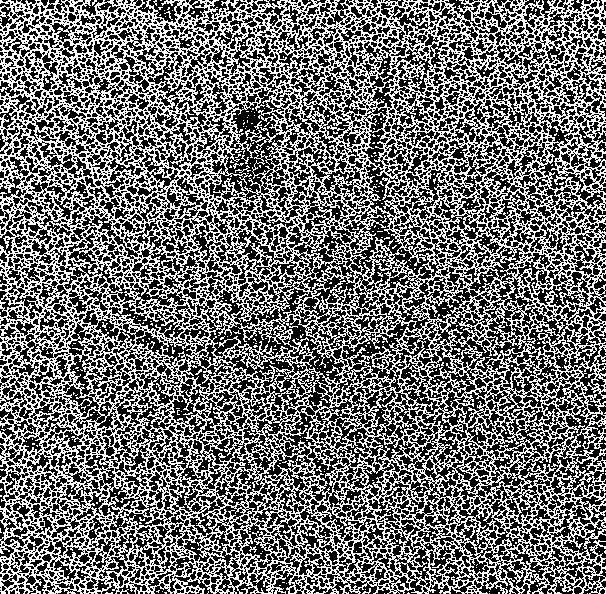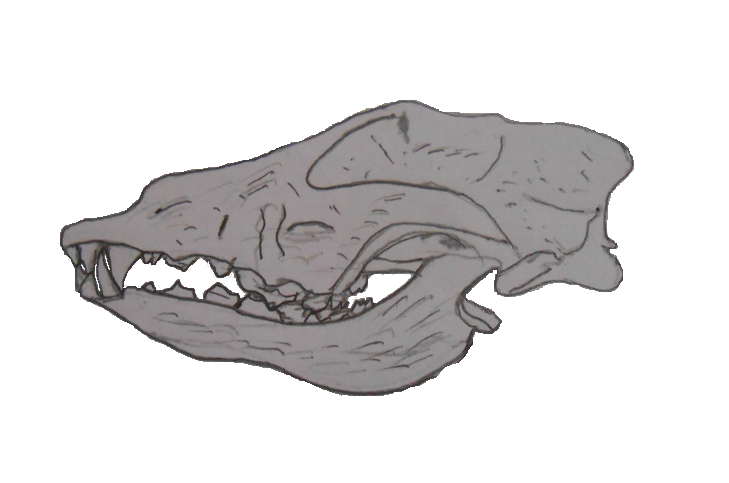|
Mezmaiskaya Cave
Mezmaiskaya Cave (russian: Мезмайская пещера) is a prehistoric cave site overlooking the right bank of the Sukhoi Kurdzhips (a tributary of the Kurdzhips River) in the southern Russian Republic of Adygea, located in the northwestern foothills of the North Caucasus in the Caucasus Mountains system. Archaeology Neanderthal Initial excavations in the Mezmaiskaya cave recovered Mousterian artifacts of the Last glacial period. The Late Middle Paleolithic stratigraphic layers at Mezmaiskaya are composed of 7 layers, dating from roughly 70,000 to 40,000 BP. Three Neanderthal individuals were recovered from the cave. The first, ''Mezmaiskaya 1'', was recovered in 1993 and is an almost complete skeleton in a well preserved state due to calcite cementation that covers and holds the arrangement in place. It was assessed to be an infant about two weeks old, making it the youngest Neanderthal ever recovered. Although no burial pit was found, circumstances suggest that the ... [...More Info...] [...Related Items...] OR: [Wikipedia] [Google] [Baidu] |
Ancient DNA
Ancient DNA (aDNA) is DNA isolated from ancient specimens. Due to degradation processes (including cross-linking, deamination and fragmentation) ancient DNA is more degraded in comparison with contemporary genetic material. Even under the best preservation conditions, there is an upper boundary of 0.4–1.5 million years for a sample to contain sufficient DNA for sequencing technologies. The oldest sample ever sequenced is estimated to be 1.65 million years old. Genetic material has been recovered from paleo/archaeological and historical skeletal material, mummified tissues, archival collections of non-frozen medical specimens, preserved plant remains, ice and from permafrost cores, marine and lake sediments and excavation dirt. On 7 December 2022, ''The New York Times'' reported that two-million year old genetic material was found in Greenland, and is currently considered the oldest DNA discovered so far. History of ancient DNA studies 1980s The first study of what would ... [...More Info...] [...Related Items...] OR: [Wikipedia] [Google] [Baidu] |
Weathering
Weathering is the deterioration of rocks, soils and minerals as well as wood and artificial materials through contact with water, atmospheric gases, and biological organisms. Weathering occurs ''in situ'' (on site, with little or no movement), and so is distinct from erosion, which involves the transport of rocks and minerals by agents such as water, ice, snow, wind, waves and gravity. Weathering processes are divided into ''physical'' and ''chemical weathering''. Physical weathering involves the breakdown of rocks and soils through the mechanical effects of heat, water, ice, or other agents. Chemical weathering involves the chemical reaction of water, atmospheric gases, and biologically produced chemicals with rocks and soils. Water is the principal agent behind both physical and chemical weathering, though atmospheric oxygen and carbon dioxide and the activities of biological organisms are also important. Chemical weathering by biological action is also known as biological wea ... [...More Info...] [...Related Items...] OR: [Wikipedia] [Google] [Baidu] |
Fauna
Fauna is all of the animal life present in a particular region or time. The corresponding term for plants is ''flora'', and for fungi, it is '' funga''. Flora, fauna, funga and other forms of life are collectively referred to as '' biota''. Zoologists and paleontologists use ''fauna'' to refer to a typical collection of animals found in a specific time or place, e.g. the "Sonoran Desert fauna" or the "Burgess Shale fauna". Paleontologists sometimes refer to a sequence of faunal stages, which is a series of rocks all containing similar fossils. The study of animals of a particular region is called faunistics. Etymology ''Fauna'' comes from the name Fauna, a Roman goddess of earth and fertility, the Roman god Faunus, and the related forest spirits called Fauns. All three words are cognates of the name of the Greek god Pan, and ''panis'' is the Greek equivalent of fauna. ''Fauna'' is also the word for a book that catalogues the animals in such a manner. The term was first used b ... [...More Info...] [...Related Items...] OR: [Wikipedia] [Google] [Baidu] |
Introgression
Introgression, also known as introgressive hybridization, in genetics is the transfer of genetic material from one species into the gene pool of another by the repeated backcrossing of an interspecific hybrid with one of its parent species. Introgression is a long-term process, even when artificial; it may take many hybrid generations before significant backcrossing occurs. This process is distinct from most forms of gene flow in that it occurs between two populations of different species, rather than two populations of the same species. Introgression also differs from simple hybridization. Simple hybridization results in a relatively even mixture; gene and allele frequencies in the first generation will be a uniform mix of two parental species, such as that observed in mules. Introgression, on the other hand, results in a complex, highly variable mixture of genes, and may only involve a minimal percentage of the donor genome. Definition Introgression or introgressive hybri ... [...More Info...] [...Related Items...] OR: [Wikipedia] [Google] [Baidu] |
Denisova Cave
Denisova Cave (russian: Денисова пещера, lit= the cave of Denis, translit= Denísova peshchéra; alt, Аю-Таш, lit= Bear Rock, translit= Ayu Tash) is a cave in the Bashelaksky Range of the Altai mountains, Siberia, Russia. The cave has provided items of great paleoarchaeological and paleontological interest. Bone fragments of the Denisova hominin originate from the cave, including artifacts dated to around 40,000 BP. A 32,000-year-old prehistoric species of horse has also been found in the cave. The cave is located in a region thought to have been inhabited concurrently in the past by Neanderthals and by modern humans. A bone needle dated to 50,000 years ago was discovered at the archaeological site in 2016 and has been described as the most ancient needle known (though another possible needle dates to about 10,000 years earlier from South Africa from 61,000 years ago). Denisovans, Neanderthals and related hybrids may have inhabited the Denisova Cave ... [...More Info...] [...Related Items...] OR: [Wikipedia] [Google] [Baidu] |
Ust'-Ishim Man
Ust'-Ishim man is the term given to the 45,000-year-old remains of one of the early modern humans to inhabit western Siberia. The fossil is notable in that it had intact DNA which permitted the complete sequencing of its genome, one of the oldest modern human genomes to be so decoded. The remains consist of a single bone—left femur—of a male hunter-gatherer, which was discovered in 2008 protruding from the bank of the Irtysh River by Nikolai Peristov, a Russian sculptor who specialises in carving mammoth ivory. Peristov showed the fossil to a forensic investigator who suggested that it might be of human origin. The fossil was named after the Ust'-Ishim District of Siberia where it had been discovered. Genome sequencing The fossil was examined by paleoanthropologists in the Max Planck Institute for Evolutionary Anthropology, located in Leipzig, Germany. Carbon dating showed that the fossil dates back to 45,000 years ago, making it the oldest human fossil to be so dated. Scie ... [...More Info...] [...Related Items...] OR: [Wikipedia] [Google] [Baidu] |
Marine Isotope Stage
Marine isotope stages (MIS), marine oxygen-isotope stages, or oxygen isotope stages (OIS), are alternating warm and cool periods in the Earth's paleoclimate, deduced from oxygen isotope data reflecting changes in temperature derived from data from deep sea core samples. Working backwards from the present, which is MIS 1 in the scale, stages with even numbers have high levels of oxygen-18 and represent cold glacial periods, while the odd-numbered stages are lows in the oxygen-18 figures, representing warm interglacial intervals. The data are derived from pollen and foraminifera (plankton) remains in drilled marine sediment cores, sapropels, and other data that reflect historic climate; these are called proxies. The MIS timescale was developed from the pioneering work of Cesare Emiliani in the 1950s, and is now widely used in archaeology and other fields to express dating in the Quaternary period (the last 2.6 million years), as well as providing the fullest and best data ... [...More Info...] [...Related Items...] OR: [Wikipedia] [Google] [Baidu] |
Goyet Caves
The Goyet Caves (french: Grottes de Goyet) are a series of connected caves located in Wallonia in a limestone cliff about 15 m (50 ft) above the river Samson near the village of Mozet in the Gesves municipality of the Namur province, Belgium. The site is a significant locality of regional Neanderthal and European early modern human occupation, as thousands of fossils and artifacts were discovered that are all attributed to a long and contiguous stratigraphic sequence from 120,000 years ago, the Middle Palaeolithic to less than 5.000 years ago, the late Neolithic. A robust sequence of sediments was identified during extensive excavations by geologist Edouard Dupont, who undertook the first probings as early as 1867. The site was added to the Belgian National Heritage register in 1976. Site Located just south of the ''Goyet Castle'' the caves are essentially long underground galleries, rich in speleothems and carved out of the limestone during millions of years by the waters of ... [...More Info...] [...Related Items...] OR: [Wikipedia] [Google] [Baidu] |
Spy Cave
Spy Cave (french: Grotte de Spy) is located in Wallonia near Spy in the municipality of Jemeppe-sur-Sambre, Namur Province, Belgium above the left bank of the Orneau River. Classified as a premier Heritage site of the Walloon Region, the location ranks among the most significant paleolithic sites in Europe. The cave consists of numerous small chambers and corridors.Camille Daujeard, Grégory Abrams, Mietje Germonpré, Jeanne-Marie Le Pape, Alicia Wampach, Kevin Di Modica, Marie-Hélène Moncel "Neanderthal and animal karstic occupations from southern Belgium and south-eastern France: Regional or common features?", ''Quaternary International'' Available online 27 May 2016, doi:10.1016/j.quaint.2016.02.009/ref> Excavations Since the first amateur investigations during the late 19th century numerous amateur and professional archaeologists have carried out excavations and removed all sediment deposits of the cave. In 1886 Neanderthal fossils of excellent quality were discovered, wh ... [...More Info...] [...Related Items...] OR: [Wikipedia] [Google] [Baidu] |
Vindija Cave
Vindija Cave is an archaeological site associated with Neanderthals and modern humans, located in the municipality of Donja Voća, northern Croatia. Three of these Neanderthals were selected as the primary sources for the first draft sequence of the Neanderthal genome project. Description The cave is located roughly west of the city of Varaždin and north of Ivanec. It is estimated that Neanderthals used the cave 40,000 years ago; approximately 8000 years before modern humans lived in that part of Europe. The hominid specimens at level 3G are regarded as unquestionably Neanderthal in overall morphology but exhibit a number of traits that sit closer to anatomically modern Europeans than to the traditional Neanderthal. These include a thinner and less projecting brow ridge, reduced facial size, and narrower front teeth. Though some have put these differences down to the small size of the Vindija individuals, a study conducted in 1995 established that the Vindija Neanderthals, t ... [...More Info...] [...Related Items...] OR: [Wikipedia] [Google] [Baidu] |
Clade
A clade (), also known as a monophyletic group or natural group, is a group of organisms that are monophyletic – that is, composed of a common ancestor and all its lineal descendants – on a phylogenetic tree. Rather than the English term, the equivalent Latin term ''cladus'' (plural ''cladi'') is often used in taxonomical literature. The common ancestor may be an individual, a population, or a species (extinct or extant). Clades are nested, one in another, as each branch in turn splits into smaller branches. These splits reflect evolutionary history as populations diverged and evolved independently. Clades are termed monophyletic (Greek: "one clan") groups. Over the last few decades, the cladistic approach has revolutionized biological classification and revealed surprising evolutionary relationships among organisms. Increasingly, taxonomists try to avoid naming taxa that are not clades; that is, taxa that are not monophyletic. Some of the relationships between organisms ... [...More Info...] [...Related Items...] OR: [Wikipedia] [Google] [Baidu] |






